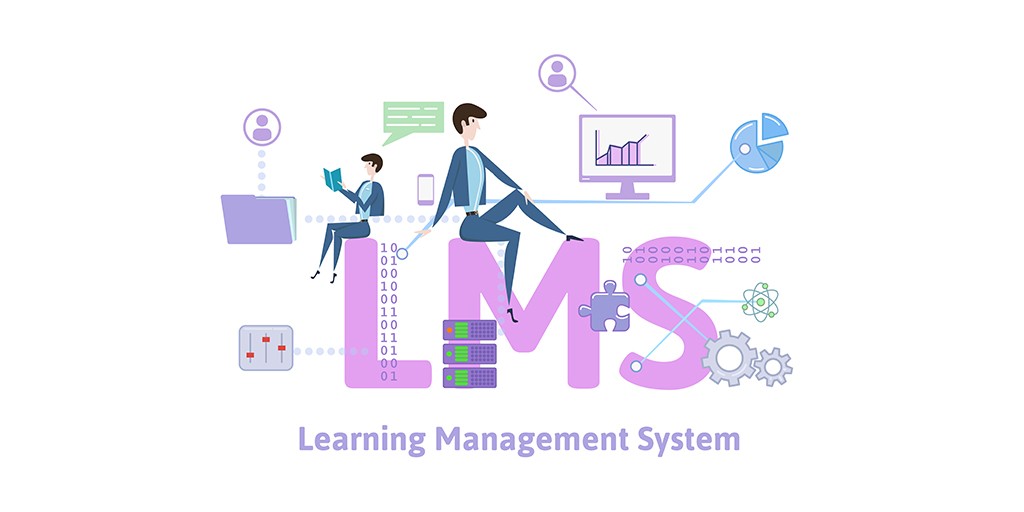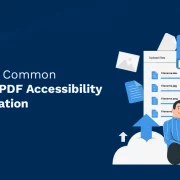
How to Choose the Best LMS Platforms for Business?
Summary
Explore how LMS platforms offer a cost-effective training alternative, with guidance on evaluating needs, system types, pricing, and essential features for selection.
Learning management systems (LMS), coupled with eLearning, have emerged as a viable and cost-efficient alternative to conventional educational delivery methods. Online LMS platforms enable corporate and higher educational institutions to merge classroom and blended learning models to provide an immersive training experience to learners.
Modern-day cloud-based SaaS (Software-as-a-Service) LMS platforms do not require installation, maintenance, or upgradation. You can open an LMS website to design, upload, and deliver training materials to multiple devices 24 x 7 x 365.
LMS platforms are no longer a luxury; they are a necessity. The LMS market has been growing at a breakneck speed of 19.6% CAGR. Experts expect the eLearning market to surpass $375 billion by 2026 and the LMS market to cross $22 billion by 2023.
Hence, an LMS platform is a must if you want to make your training delivery method future-ready. However, finding the best platform among hundreds (if not more) of LMS platforms is no mean feat. It may cost you both time and money to scan various systems till you find a suitable one.
This blog provides a detailed guide to finding the best LMS platform offering unparalleled features at affordable prices.
Choosing the Best Learning Management System Platform: A Step-by-Step Guide
When you want to make your training delivery system future-ready, pricing shouldn’t be the only concern.
Instead, you must evaluate various other factors, such as your company’s needs, the stakeholders’ preferences, learning and development objectives, etc., before sifting through LMS platforms.
The following are some simple steps to pick the best LMS platform:
1. Evaluate Your Needs
Analyzing your needs is the first thing to do before comparing LMS platforms.
Different platforms offer different benefits and knowing your needs is crucial to finding the best platform. Generally, corporate and higher education institutions use LMS platforms for the following use cases:
- Training Employees – LMS platforms enable smooth learning for employees. You can use an LMS platform to offer training to multiple departments without allotting separate training dates or venues. Moreover, you can conveniently track training effectiveness through advanced LMS analytics.
- Induction or Onboarding Training – Welcoming newcomers is a stressful task. An LMS platform lets you automate the onboarding or induction process by designing training materials that explain the company’s history, rules, employees’ duties, leave rules, and the like.
- Knowledge Retention: Proper reinforcement is essential for keeping learners interested in the subject. LMS platforms simplify knowledge management by providing easy access to a massive knowledge base. While old learners or employees contribute materials on the LMS, new learners can check those materials to expand their knowledge.
- General Support: Sometimes, you may not want to shift entirely to an LMS. However, you can also transfer a part of your current training delivery model to an LMS platform to improve the output, such as to gamify learning, conduct tests, etc.
Identifying your needs or the use case is vital for filtering the best platform from among the top LMS platforms.
You can ask questions like, “Who will use the LMS?” “What kind of equipment or device will the trainees use? “Can the trainees access the internet at all times?” to suit the training content as per their preferences.
2. Decide Which LMS Type You Need
LMS platforms are of two types: proprietary and open-source.
Proprietary platforms are fully owned by the developer, and the customer has to pay a decent sum to get access. Although a proprietary system limits customization to an extent, you can get excellent customer support, streamlined usage, and reliable service.
These LMS systems are ideal for people without the know-how to customize such systems or those wanting quick results.
Open-source LMS systems are often free or cost considerably less than proprietary ones. You can modify an open-source LMS platform according to your needs.
Be it custom features, or third-party integrations, you may do anything with an open-source platform to suit your requirements. However, an open-source platform does not provide experts like proprietary platforms to help you during problematic situations.
So, choose the LMS platform type based on the features you need and your budget.
3. Check the Pricing
Proprietary LMS platforms offer incredible functionality and are easy to use. Moreover, you can control the pricing depending on your needs. Generally, proprietary LMS platforms provide the following three kinds of pricing:
- Pay-per-Learner – You pay a predefined sum for a fixed set of learners in this format.
- Pay-per-Active Learner – Unlike the previous format, you need to pay the platform owner only when learners use your platform in a billing cycle. So, if fifty members use your platform monthly, you have to pay only for the fifty members, not those you have invited to join.
- Subscription – This format is suitable if you do not know how many users will access the platform or how many will be active. You can browse the platform’s tariff plan to finalize.
4. Check the Features
The best LMS platform lets you have the freedom to choose, collaborate, and customize the content conveniently. You can change the theme, look, feel, and design of the platform to reflect your company branding.
Moreover, when you use an LMS platform like Hurix, your content’s ownership, and intellectual property rights remain with you. So, you do not need any user license to deliver the content.
High-quality LMS platforms also let you customize the workflow to match your organization’s user hierarchy and training needs. Additionally, you can choose between your official enterprise cloud/intranet Server or the Lplatform’sm’s cloud-based hosting service.
Also Read: Enhance Your Employee Engagement with These LMS Features
Conclusion
Choosing the best among hundreds of LMS platforms is not an easy task. However, proper knowledge of the features and types can help you pick the best one conveniently.
You may ask your LMS provider to give a live system demo before subscribing to it. The live demo helps you check whether the platform’s features and usability match your requirements or not.
Hurix Digital offers a 100% cloud-based SaaS LMS platform to conveniently manage your training sessions. Our end-to-end LMS services cover everything from LMS administration and support to learning content management. Click here to learn more about Hurix’s processes.







